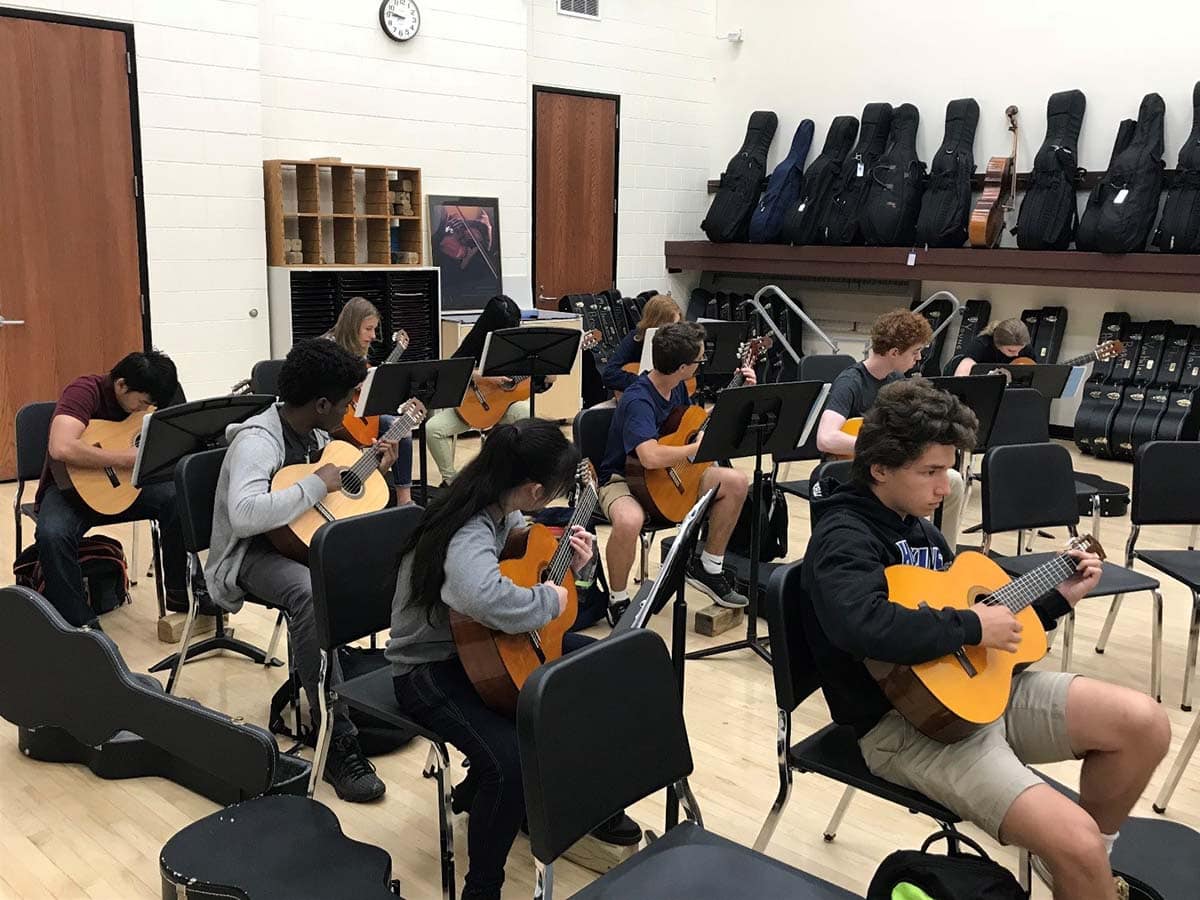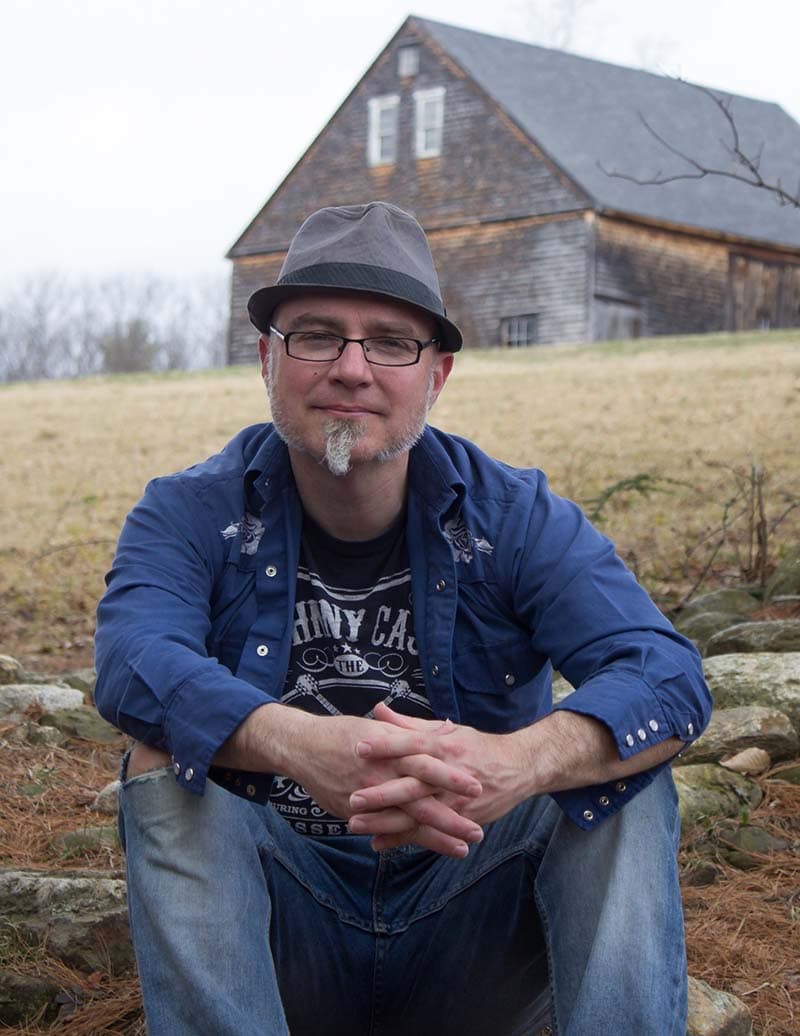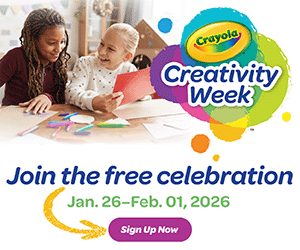/ News Posts / Guitar Class, Well Worth It!
Guitar Class, Well Worth It!
By Thomas Amoriello Jr.
NAfME Member and NAfME Council for Guitar Education Chair-Elect
There are so many great stories to share about what’s happening in guitar education—whether it is about a student who learned a difficult etude to audition for All-State Guitar, or another who strummed a few chords to their favorite pop song. Guitar education is about enhancing our students lives in a positive way, and Mark Czech is an educator who does just that. Mark is a respected music educator in Minnesota who teaches guitar classes and music technology at Hopkins High School in Minnetonka. He received his BA in Music Education from Augsburg College and his Masters in Curriculum and Instruction from the University of St. Thomas.
“The program fits a unique niche for our student body,” shares Czech’s principal, Doug Bullinger. “It’s an instrument that is accessible and enduring. Mark assures students that none are expected to be good at it right away, but that they will be by the end of the course. He is able to coach each student individually, so they all grow in their ability and are proud of themselves after their time in the course.”
Mark Czech shares some insights and experiences from teaching guitar.
Please tell us about your school and overall music program.
We are a western suburban 10-12 grade high school of about 1,500 students, located outside of Minneapolis. We have significant diversity in our school.

What obstacles did you face when you were first hired at your school?
No obstacles—I was an orchestra director for about 20 years. Will Schmidt, then-director of NAfME, started a program called Get America Singing Again. At that time, he figured a good way to do it was to encourage the start of guitar courses, so he partnered with NAMM. They, in turn, offered summer camps for educators on how to start guitar programs. I was the recipient of a summer scholarship to attend, a free guitar, and great resources. I had great instructors including Bill Purse and Nancy Marsters. Upon returning back to my school I wrote a grant application and asked the district to give me enough money for a few guitars and ten students who were “at-risk.”
They did that, and the rest is history! The program is now about 20 years old, and we have three levels: beginning, intermediate, and advanced.
“If we really want comprehensive music education, we must keep finding new ways to engage all students in music and not just the traditional music offerings of band, orchestra, and choir.”
One of the things that I think makes our program different than others is that we do not create performance ensembles. Instead, instruction is geared toward developing individual technical skills and playing songs—what kids want to do. There are plenty of playing tests, which we call proficiencies, as well as written tests.
What kind of classes related to the guitar do you teach?
Three levels of guitar class with sizes ranging from 20 to 38.
What would you like to say to the non-guitarist music educators who are about to or interested in incorporating the guitar into their program?
Well worth it—as long as you make it about the kids and not you.
My belief is that we are supposed to be “music educators.” Instead colleges produce band teachers, orchestra teachers, and choir teachers. In this scenario only half to two-thirds of your high school students ever receive any music education.

What kind of future do you see for guitar in music education in the Minnesota school system?
I think there are a lot of instrumental directors who are not for it because they think they will lose students—and, as a result, lose staffing. That has NOT been true for us.
In fact, between guitar and our music technology program, we have increased enrollment in our department and staffing.

Any last thoughts to conclude our interview?
If we really want comprehensive music education, we must keep finding new ways to engage all students in music and not just the traditional music offerings of band, orchestra, and choir.
In the years that we have had this course, we have introduced thousands and thousands of students to the work of guitar. I would also say that, of all the music education in public school, the greatest percentage of students who continue playing their instruments after high school other than voice is without question our guitar students.
So, if we really want music to be lifelong, then why are we not teaching them the instrument that they will play . . . lifelong?
About the author:

Thomas Amoriello is the Guitar Education Chairperson for the New Jersey Music Education Association and also serves as the chair-elect on the NAfME Council for Guitar Education. He teaches guitar for the Flemington Raritan School District and Hunterdon Academy of the Arts. Tom graduated from Shenandoah Conservatory with a Master of Music Degree in Classical Guitar Performance. He is the author of the children’s picture books; A Journey to Guitarland with Maestro Armadillo & Ukulele Sam Strums in the Sand, both available from Black Rose Writing. He recently made two 7-inch vinyl recordings released on H42 Records of Hamburg, Germany, featuring former members of Black Sabbath, Whitesnake, Dio, Yngwie Malmsteen’s Rising Force, and more.
Published Date
June 6, 2018
Category
- Ensembles
Copyright
June 6, 2018. © National Association for Music Education (NAfME.org)



